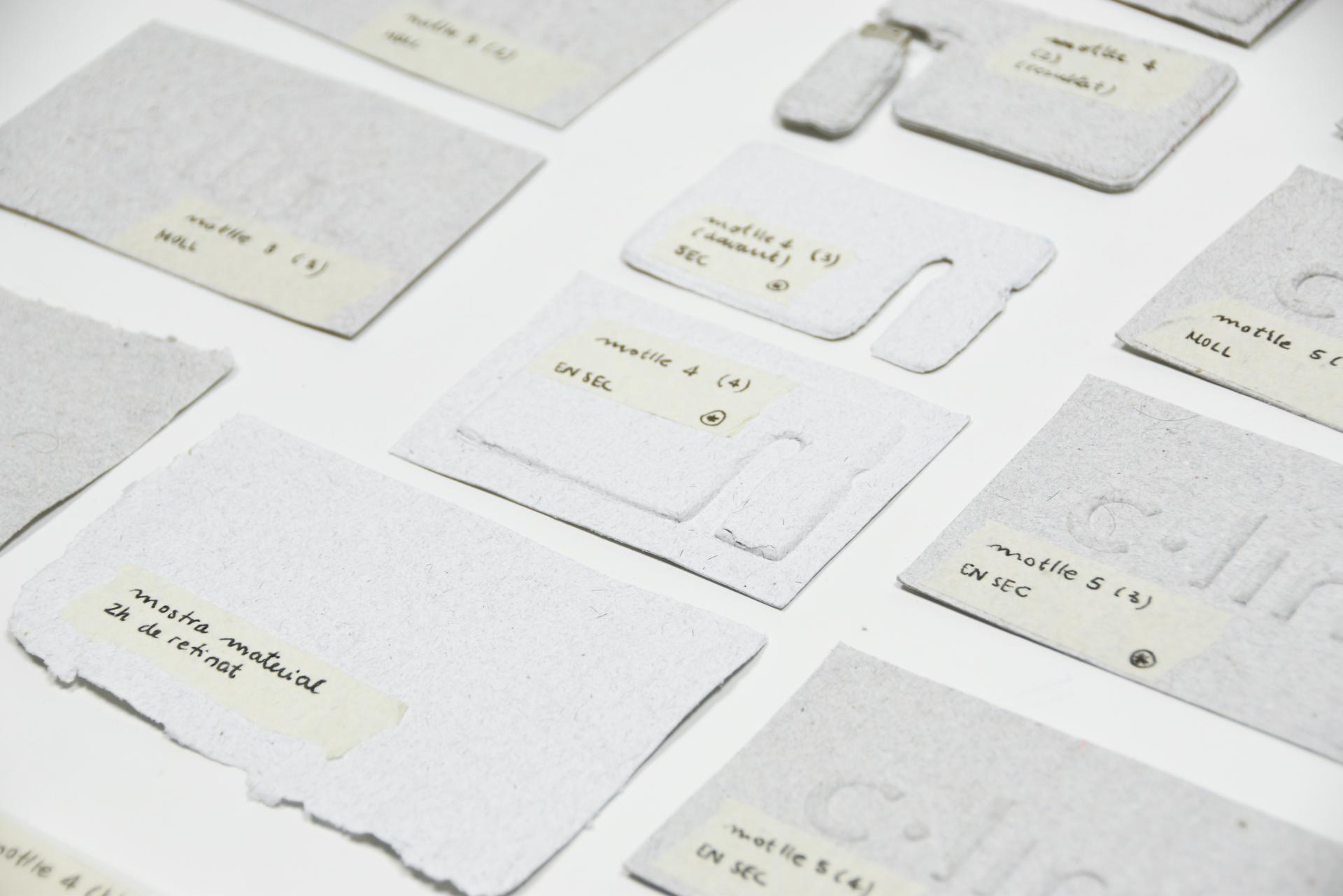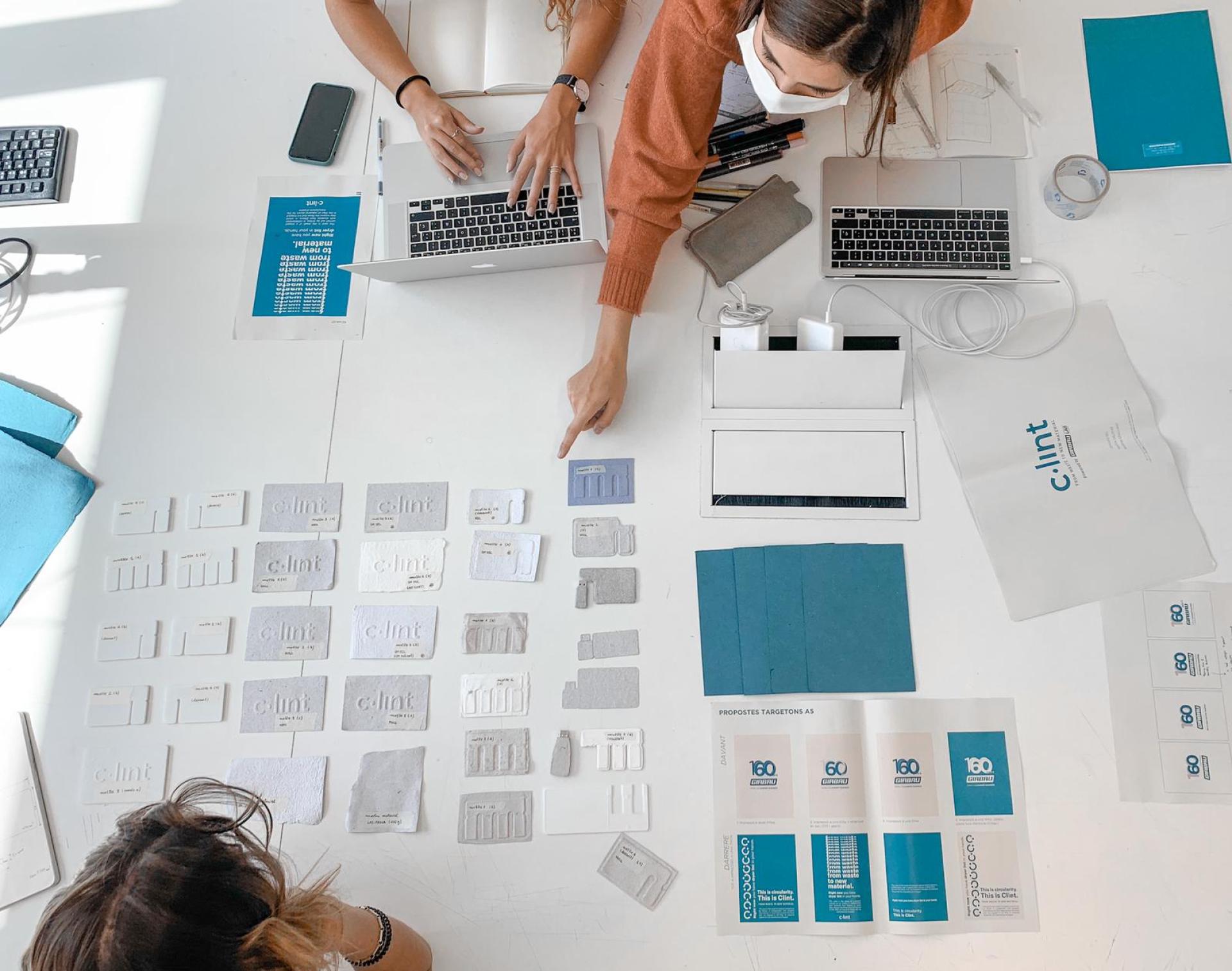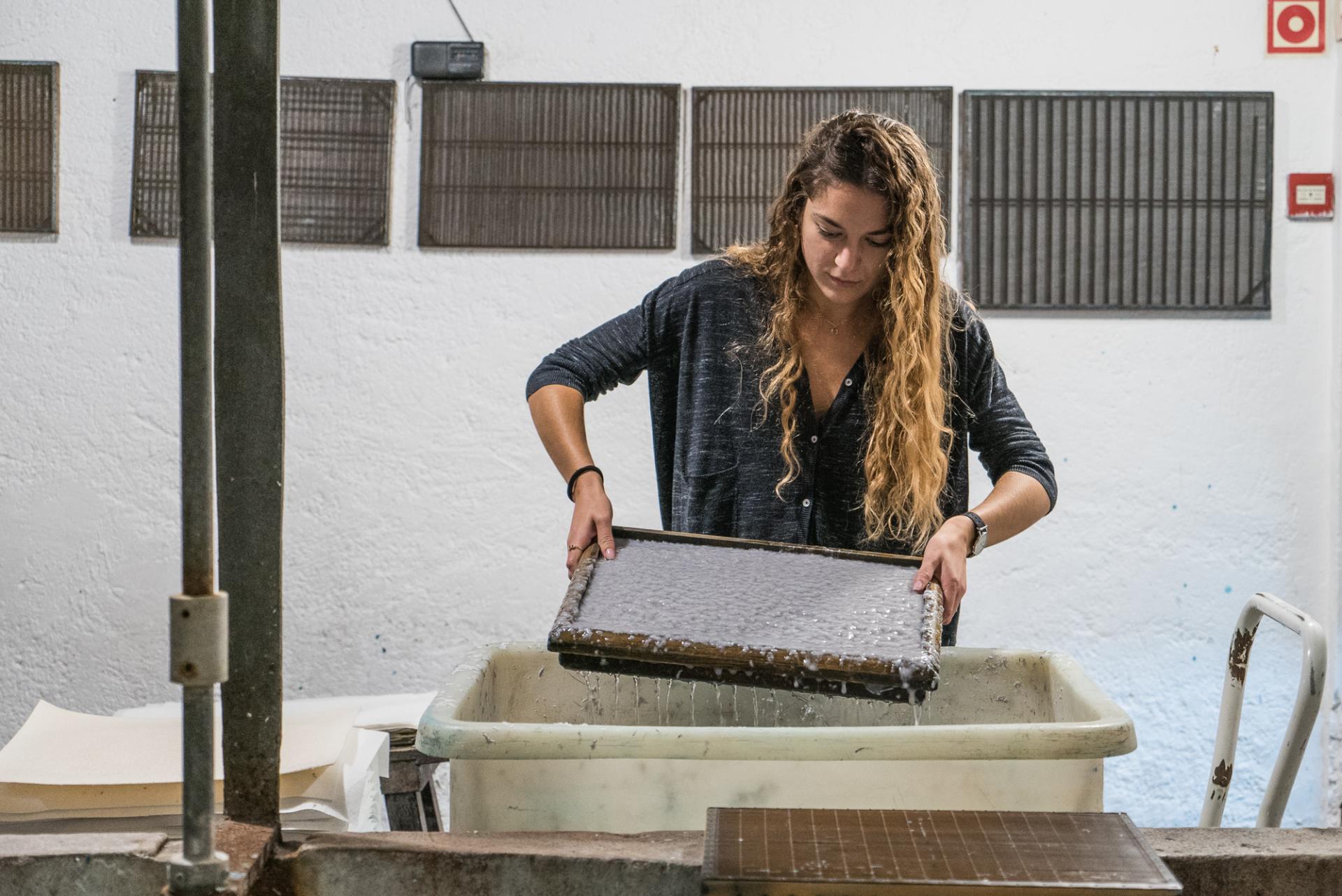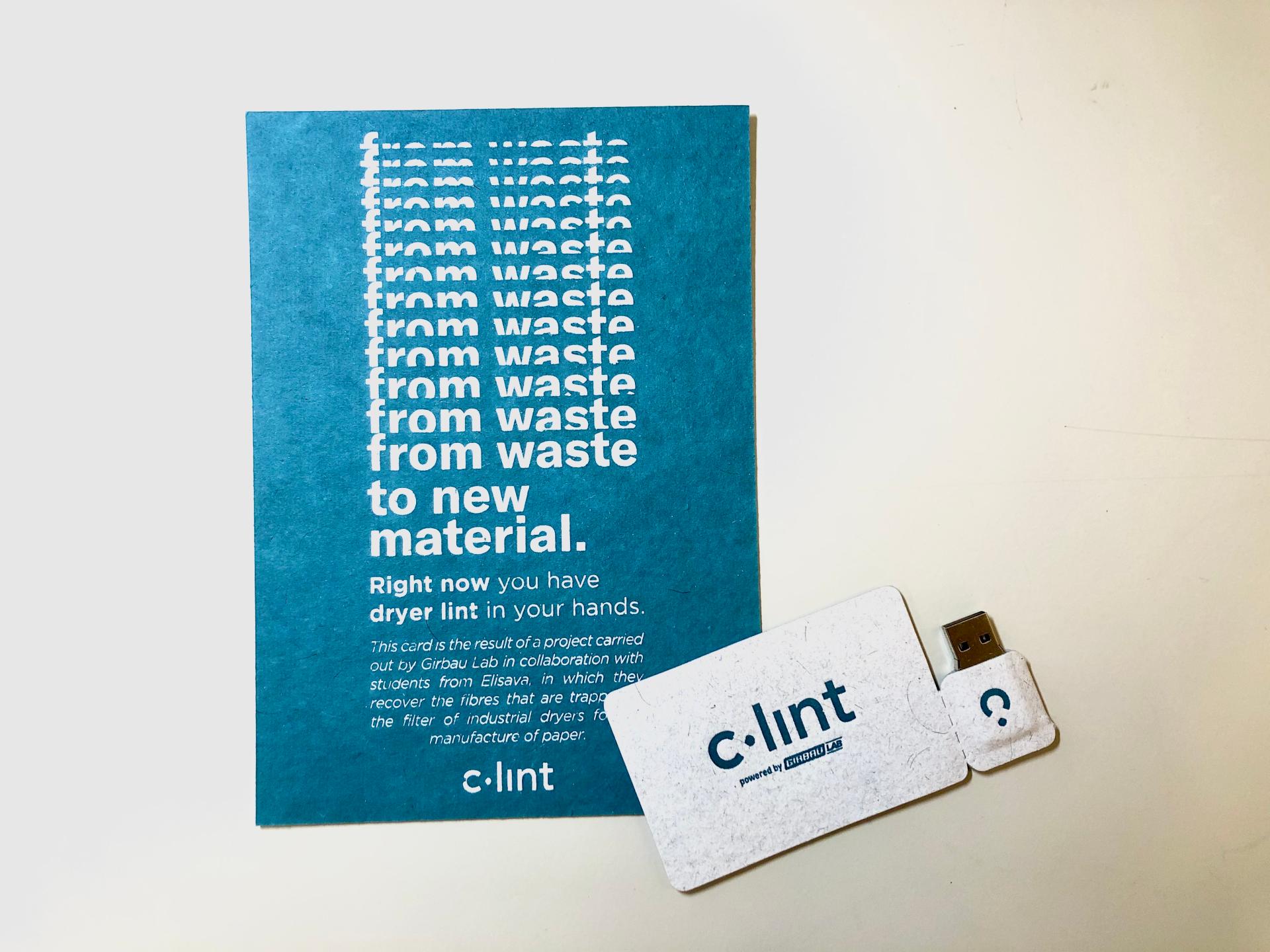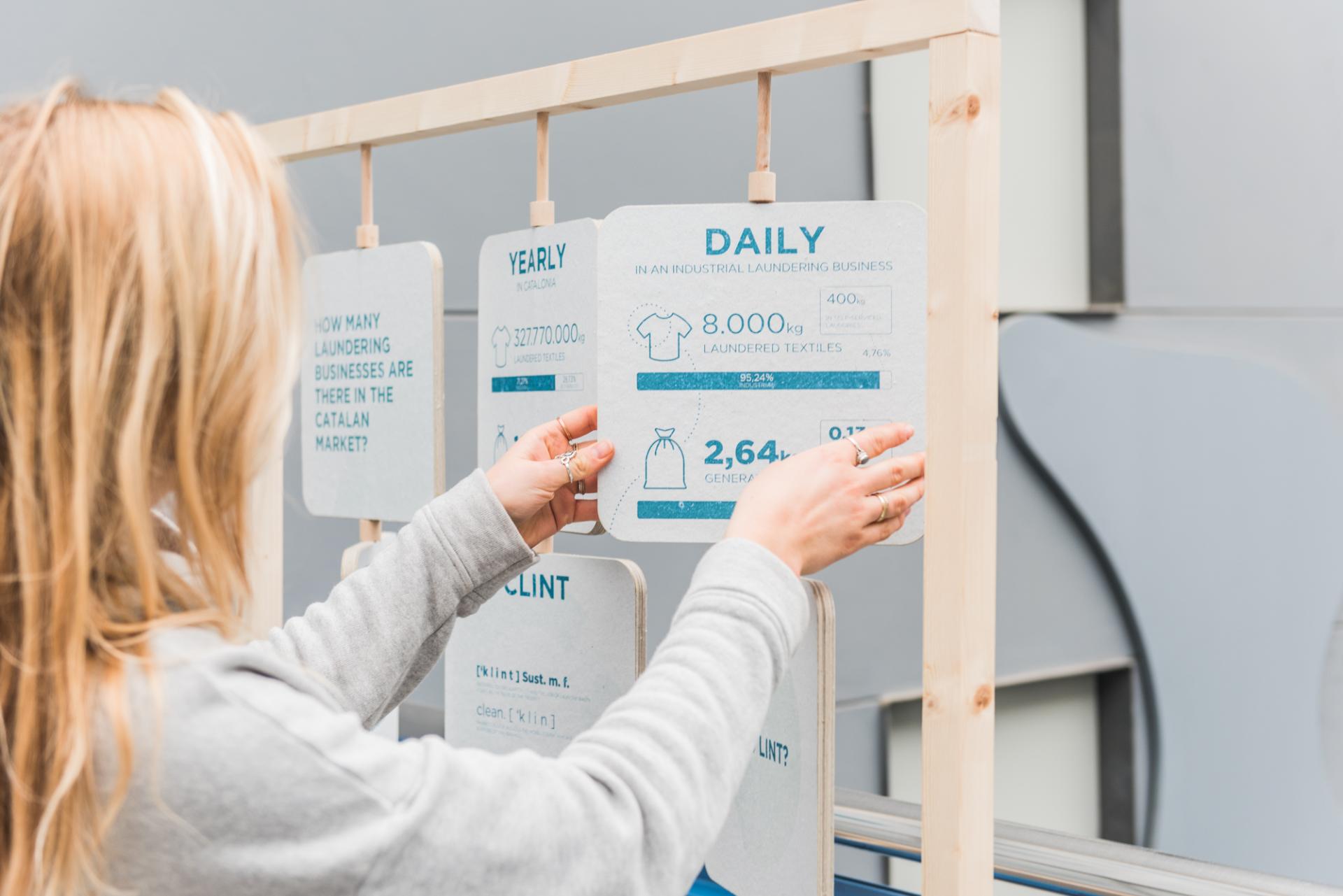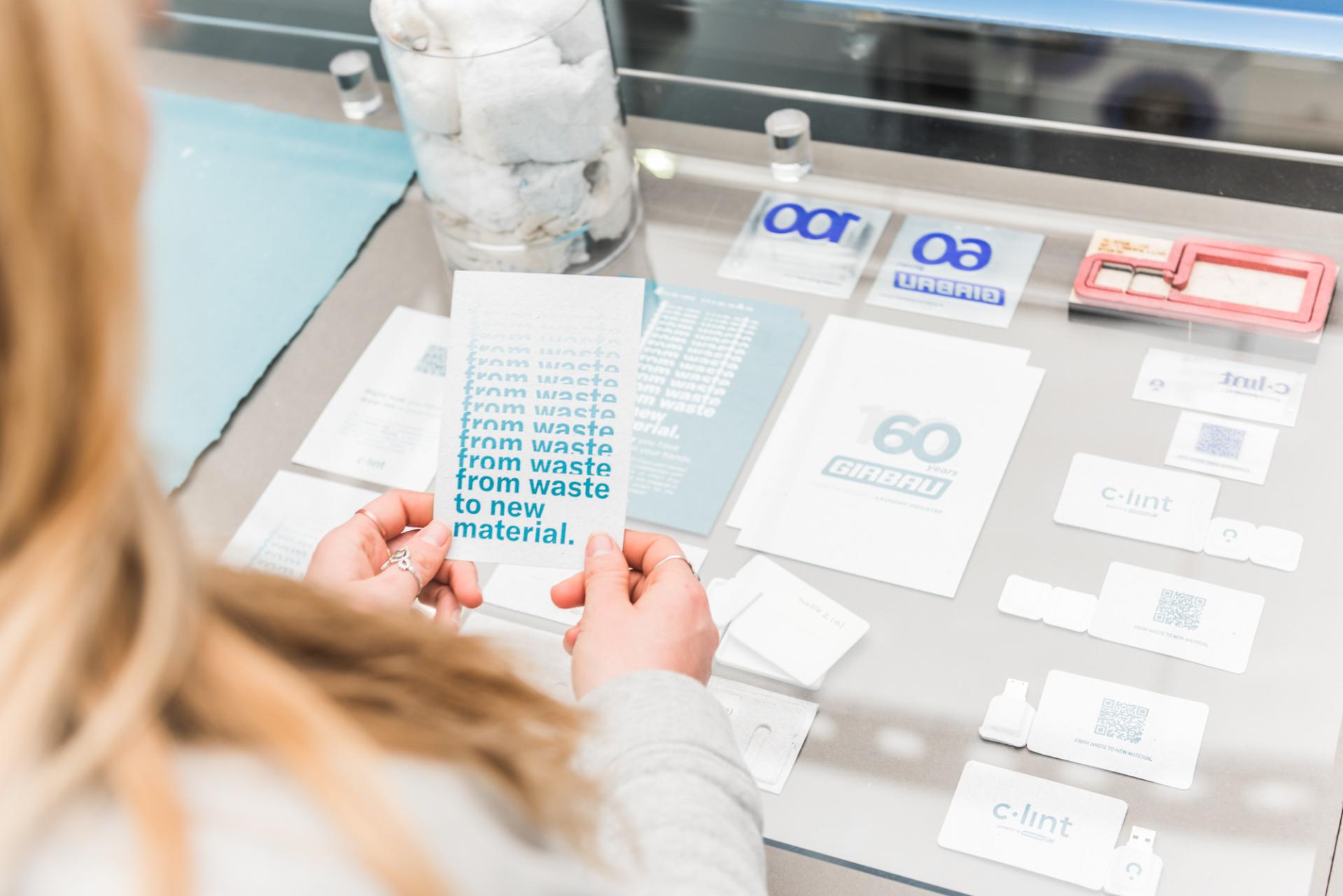Clint Project
Basic information
Project Title
Full project title
Category
Project Description
Clint is an essential step towards circular laundry and sustainability that transforms waste into new material and advances zero waste. Clint is innovation, collaboration, talent, and strategic alliances between the leadership of GirbauLab and the creativity of Elisava Barcelona School of Design and Engineering.
Project Region
EU Programme or fund
Description of the project
Summary
Clint proposes transforming textile waste form dryers (dry solid waste) into material for paper and cardboard of between 0.3 and 1.3 mm thick.
The applications that the new material Clint can offer are extensive and different as they are an innovative alternative to the use of plastic materials and paper or cardboard objects that already exist, as pen-drive cases.
One of the key factors of the project is the generation of new material from the waste captured directly in the dryer filters (the lint), without the need to add any other material,
Key objectives for sustainability
Clint is an innovative, sustainable, scalable, and creative solution that allows:
-
Evaluate the solid waste generated during the washing and drying processes.
-
To convert a much-unattended waste with an associated cost into a resource with a differential, scalable, and sustainable added value, with a circular process, instead of a lineal.
-
Reduce emissions of polluting products and save resources. Mitigates the evident risks that the manipulation of microplastics generates in the environment, both in the aquatic and air environment.
Key objectives for aesthetics and quality
The products produced with the dry solid waste material are a replace to plastic or paper treated with heavy chemistry, giving them an artisan paper look.
Also, the paper has been used to communicate the project with printing methods such as letterpress, dry-stroke, ink relief, bas-relief and stamping. This method allows to work with artisan papers that are not entirely homogeneous, achieving optimum results and outcomes.
Key objectives for inclusion
The dry solid waste could be preferentially offered to produce the new material to paper mills with a social function towards inclusion.
The raw material with which the new material is produced is a non-valued waste and the process used to transform it is very standardized and simple. The result is a new product with a low production cost and a wide range of application possibilities.
Innovative character
New material created with a residue (dryers residue) through a traditional process (paper).
Also, the new material was conceived to be a paper, but thanks to its characteristic it could be conformed as a 3D so it could substitute plastic packagings and cases.

